| Aerial view of Amundson-Scott South Pole Station |
The geographical and geophysical conditions that exist at high latitudes
make certain investigations possible that cannot be done as effectively,
or at all, elsewhere. Some examples are:
|
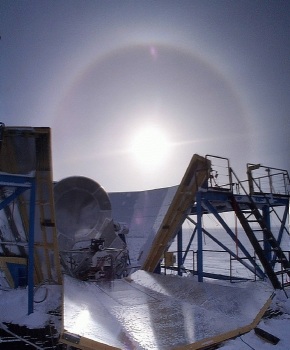
Viper telescope |
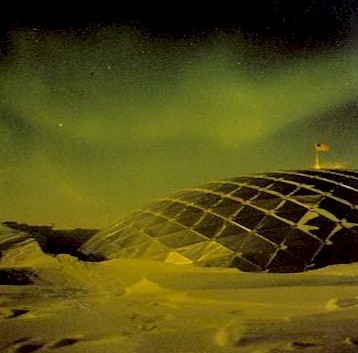
Aurora |
The proximity to the magnetic poles allows ground-based study of the outer portions of the magnetosphere and its interactions with the upper atmosphere, especially the ionosphere. Of particular interest are the aurora and other phenomena associated with the transfer of energy from the solar wind to the Earth's atmosphere. It is particularly valuable to make observations from Northern and Southern Hemisphere sites that have the same magnetic coordinates (magnetically conjugate). |
| The ice sheet can be used to install detectors for energetic particles. In order to search for very high energy neutrinos, the AMANDA and RICE projects have instrumented nearly 1/10 km3 of the ice sheet between 1400 m and 2400 m deep at South Pole. This technique offers many advantages over others for building very large volume detectors. |
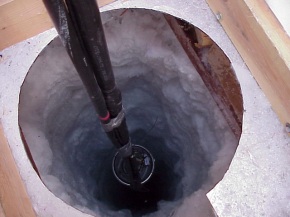
AMANDA detector string being installed |
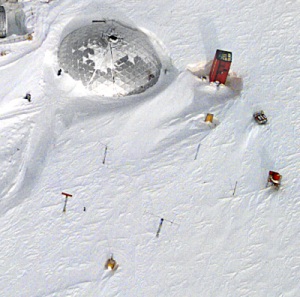 |
Science Building and Skylab Facility
The science building is located within the South Pole geodesic dome. This building contains the meteorology office and recording equipment for several experiments. The Skylab, a four-floor tower housing aeronomy instrumentation and other equipment, is next to the dome and accessible through an under-snow arch. |
| Quiet Sector
Seismology (measurement of earthquakes anywhere on Earth) and radio
detection experiments take place in the Quiet Sector, where radio emissions
and vibrations created by people at the Pole are kept to a minimum. The
Quiet Sector is grid-southeast of the dome.
|
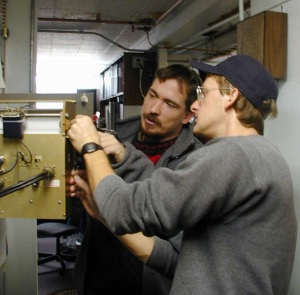 |
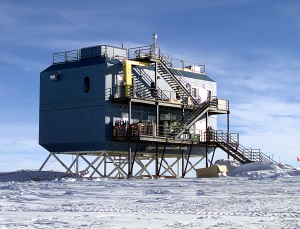 |
Clean Air Sector
The Clean Air Sector is located grid-northeast of the dome. The Atmospheric Research Observatory (ARO) is located within the Clean Air Sector and houses climate research and aeronomy projects. Because winds persistently blow toward the South Pole from this direction, the air has been virtually untouched by biota or pollution for thousands of miles - it is some of the cleanest air on Earth. |
| Dark Sector
The Dark Sector is grid-northwest of the dome. This sector is maintained with minimal interference from extraneous sources of light and other electromagnetic radiation. Microwave, infrared, and high-energy neutrino telescopes are located within the Dark Sector, as are the Martin A. Pomerantz Observatory (MAPO), which serves as headquarters for many Dark Sector projects, and the Astronomical Submillimeter Telescope/Remote Observatory (AST/RO). |
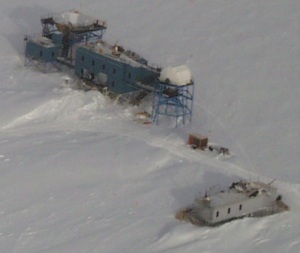 |
List of projects at South Pole
Original page can be found at http://www.spole.gov/spscience/science.htm
Return to Science
at South Pole